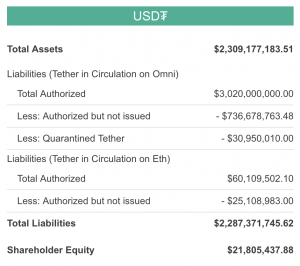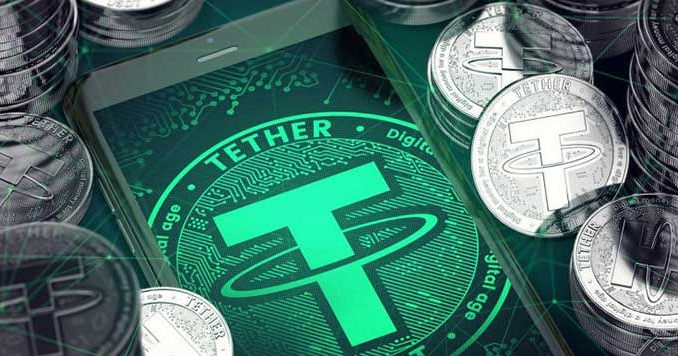Tether is back in the news, unleashing a new wave of speculation about the project and the cryptocurrency market as a whole. Concern about Tether has been prevalent for over a year now, typically rearing its head every few months and then quieting down after intense debate.
Tether(USDT) is a cryptocurrency whose value is pegged 1:1 to the US Dollar. Unlike other cryptoassets that claim to be decentralized, the reserves used to back the USDT are allegedly held and maintained by the company Tether Limited. According to Tether Limited each USDT issued can be redeemed 1:1 for a US Dollar.
The USDT is used as a stable store of value by cryptocurrency traders, speculators, and exchanges who want to move imitation US dollars throughout the world’s crypto economy without using the banking infrastructure of the international financial system. For most of its life the USDT has reliably maintained its 1:1 peg with the US Dollar but recently plunged during Monday trading to a low of 0.92 cents for every 1 US Dollar.
Since its inception, critics have been skeptical of Tether Limited’s liquidity and solvency. The project has yet to have a full public audit even though they’ve told interested investors they would. Many have used USDT without a problem but there are critics that claim Tether Limited does not have the reserves they say they do and furthermore USDT is used for fraudulent activity like money laundering, wash trading, and price manipulation.
Questions about the liquidity and solvency of Tether came up again this month when a banking partner of Tether Limited, Nobel Bank International, put itself up for sale. This increased the already palpable uncertainty surrounding Tether Limited’s banking relationships and general access to capital.

By October 10th, customers of Bitfinex were reporting that they were having US Dollar withdrawal problems. Eventually Bitfinex suspended all fiat deposits leading to a small panic in the crypto markets because of the tight relationship between Tether Limited, USDT, and Bitfinex. The rumor mill had gone into high gear.
In addition, a few large cryptocurrency exchanges like Binance and Okex started to add other stablecoins that have similar use-cases to USDT and some exchanges suspended USDT withdrawals. The addition of other stablecoins to these exchanges reignited concerns about Tether and seems some traders panicked by rotating out of USDT for a discount into Bitcoin and the alternative stablecoins at a premium.
USDT has since recovered from its lows on Monday but is still trading at a discount. According to CoinDesk, Tether Limited released this statement responding to the recent concerns:
“Tether is the leading provider of tokenized fiat currencies and is listed on many exchanges worldwide. We would like to reiterate that although markets have shown temporary fluctuations in price, all USDT in circulation are sufficiently backed by U.S. dollars (USD) and that assets have always exceeded liabilities. In June 2018, a report from Freeh Sporkin & Sullivan, LLP (FSS), based on a random date balance inspection and a full review of relevant documentation of bank accounts, confirmed that all Tethers in circulation as of that date were indeed fully backed by USD reserves.”
The phrase “sufficiently backed” in the above statement has raised doubts as to whether Tether is actually a fully reserve backed cryptocurrency. The statement implies that they have holdings of other assets besides US Dollars on their balance sheet backing the USDT. What these assets are and what proportion of the balance sheet they make up is up for speculation.

This is a debate that will continue as long as Tether exists and hasn’t provided the transparency demanded by skeptics. However, Tether has released a few attestations of funds, historically maintained its 1:1 peg, and users haven’t had an issue sending or receiving USDT.
It’s unknown how this saga will play out or how much of a risk USDT poses to the broader cryptocurrency market. Opinions are split: some think the risk is overstated while some think a collapse of USDT would be catastrophic. There are more theories and questions than answers but one thing is for sure: there’s never a dull day in crypto-land.
Edge Wallet users can use the ERC-20 version of the USDT in the Edge Wallet today. Users should keep in mind if they are using or thinking about using the USDT they are trusting a centralized authority for its good faith maintenance and operation.
